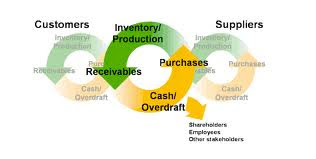FINANCIAL MANAGEMENT
The financial management means
that you need to have a planning, organizing and controlling the financial
activities.This three finance in the financial management it categorized
according their functions in the financial management.
- Managerial
Finance- this is the branch of the
finance that have the concern for the managerial significance of the
finance techniques.
- Corporate
Finance-
this is the type of finance dealing with monetary decisions that business
enterprises make and the tools and analysis used to make these decisions.
- Financial
Management for IT Services- this is the financial management of IT assets and
resources.
The Accounts Receivable also
known as debtors, this is the money owed to a business or a clients and this
will be shown on the balance sheet as an asset. The accounts receivable usually
use the sales ledger and it’s because a sales ledger normally it called
records. It will in charge for receiving funds on behalf of a company and
applying it towards their current pending balances. The collections and
cashiering teams are part of the accounts receivable department.
The Accounts Payable also known
as the creditors, is the money owed by the business to its suppliers and it
will shown also in the balance sheet as the liability. It will record here the
accounts payable sub-ledger at the time an invoice is vouchered for payment.
The payable will considered as the Trade Payables, payables for the purchase of
goods and it will record in the Inventory and Expense payables for the purchase
of goods and services that are expensed.
The General Ledger is the
collection of the group of the accounts that supports the value items that will
shown in the major financial statements and it is built by posting transactions
recorded in the sales daybook and general journals daybook. The general ledger
has a seven basic categories in which all accounts are grouped ASSETS, LIABILITY, OWNER’S
EQUITY, REVENUE, EXPENSE, GAINS, AND LOSS.
The Fixed Assets also known as
a non- current asset or as property, plant and equipment(PP&E), this is the
term used in accounting for the assets and the property which it will cannot be
easily converted into the cash. And it includes here the tangible or
non-tangible assets.
The Cash Management or Treasury Management is
the cash inflow and cash outflow in the bank. It is the certain services
offered in primarily to larger business customers. It will be used to describe
all bank accounts( such as the checking accounts) that provided in to business
in a certain size, but it is more often called to used to describe the specific
services such as the cash concentration, the zero balance accounting. It
usually used the checks deposit slip to deposit the cash in the bank. Sometimes
it is called as the private banking that customers are given cash management
services in the bank.
POSTED BY: ALYSSA MARIE P. GABI


.jpg)
.jpg)




.jpg)
.jpg)
.jpg)





